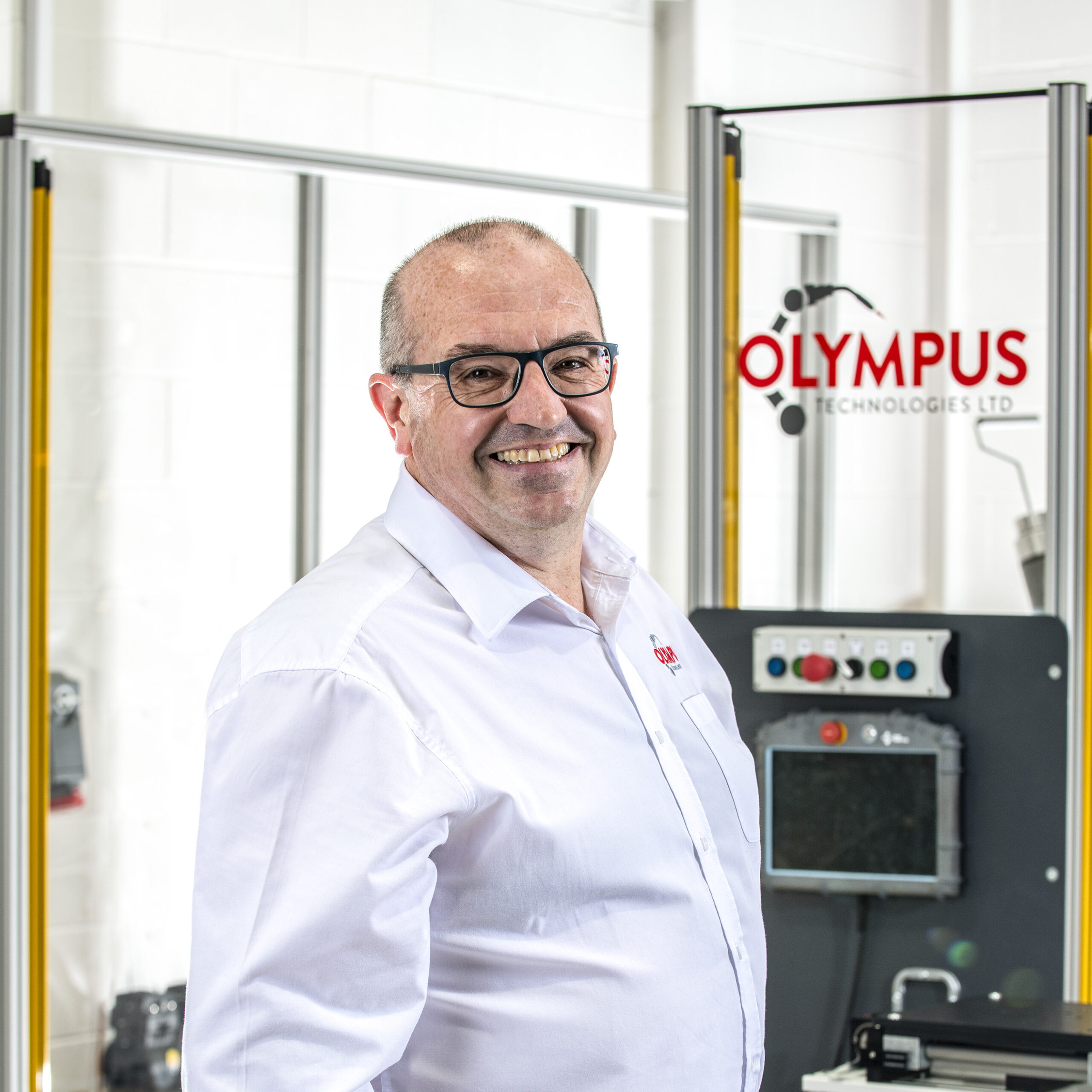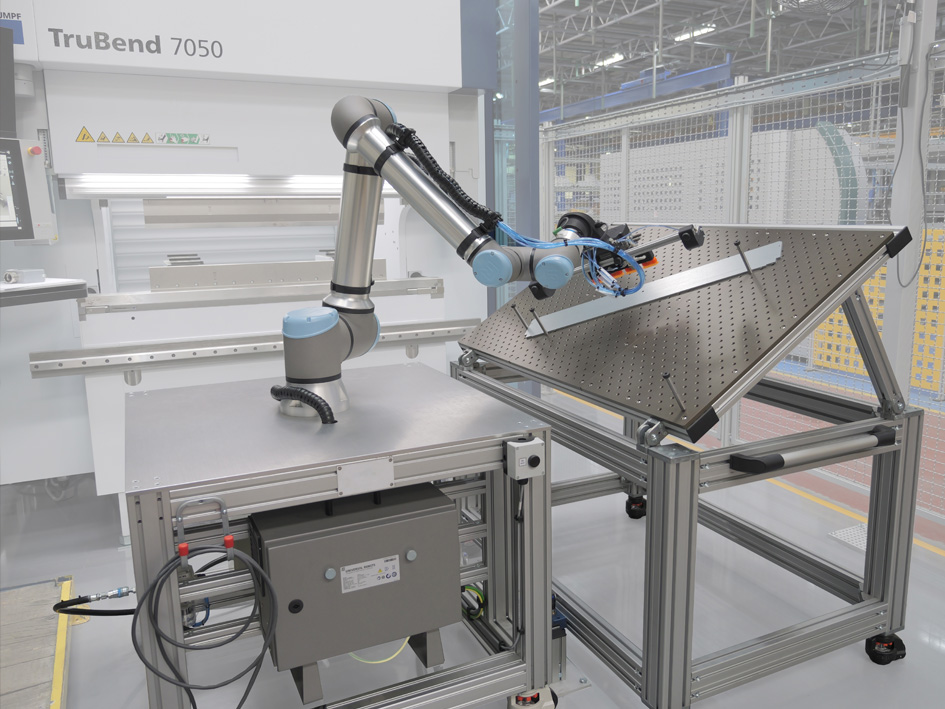Why Robotic Machine Tending Matters
Modern manufacturers face constant pressure to improve efficiency, meet strict production requirements, and maintain high product quality.
Robotic machine tending offers a practical solution for companies aiming to optimise their production processes, reduce manual intervention, and operate with greater consistency.
At its core, this form of automation involves the loading and unloading of parts from machines such as CNC machines, injection moulding equipment, and presses.
Unlike manual methods, robotic machine tending solutions can operate with minimal supervision. This results in increased productivity, shorter cycle times, and a safer environment for human workers.
Whether you're running machine shops, managing a full production line, or supporting lean automation processes, robotic systems can help reduce costs, free up staff, and deliver a rapid ROI.
What Is Robotic Machine Tending?
Machine tending refers to the act of placing and removing parts from a machine. With robotic machine tending, this is done using a robotic arm, programmed to carry out repetitive tasks with superior precision.
These systems can efficiently load and unload parts from multiple types of machinery, including for CNC automation, press tending, and injection moulding.
Robots can tend multiple machines within their operational range, eliminating common bottlenecks and reducing the risks caused by human error. By removing human workers from repetitive or hazardous environments, businesses see gains in both safety and overall equipment effectiveness.
Where accuracy, speed, and consistency are critical, the tending robot proves highly effective - especially when paired with vision systems that enhance its ability to recognise, sort, and manipulate components across multiple machines.
Key Benefits of Machine Tending Automation
Increased Productivity
Unlike people, machine tending robots can run 24/7 without fatigue or slowdown. This enables significantly reducing downtime between operations, which boosts efficiency machine output across shifts, weekends, and holidays.
By enabling continuous operation and reducing delays in loading and unloading, robots help to maximise throughput while maintaining performance standards. One robot can also tend more than one CNC machine, improving space utilisation and investment returns.
Improved Product Quality
Robotic machines follow programmed paths with high repeatability, maintaining consistency in every load and unload cycle. This level of control enhances quality control and minimises human error caused by fatigue, distraction, or inconsistency.
When each part is handled identically, the chance of misalignment, dropping, or damage is greatly reduced, which helps preserve product quality at scale.
Enhanced Safety Measures
Integrating robotic machine tending reduces employee exposure to risky operations, such as those involving compressed air, sharp tooling, or hot materials. Systems are often enclosed within safety fences or fitted with guards to isolate hazards.
By reallocating personnel from danger zones to supervisory or maintenance roles, businesses not only reduce injury risk but also support better safety procedures and long-term workforce wellbeing. With adequate training, staff can transition to higher value tasks that involve decision-making and oversight.
Smarter Use of Human Labour
Many sectors face a shortage of skilled operators. Instead of replacing jobs, automation solutions help to redeploy the existing workforce more strategically. Robots take on automating tasks that are physically demanding, monotonous, or prone to reducing human error, while people shift into roles involving system programming, process improvement, and supervision.
This type of integration improves morale, maximises talent, and aligns labour with the most critical points in the automation journey.
Manual vs Robotic Machine Tending: At-a-Glance Comparison
Here’s a simple table comparing traditional and robotic tending across key metrics:
| Metric | Manual Tending | Robotic Tending |
|---|---|---|
| Uptime | 60–70% | 90–95% |
| Error Rate | High (fatigue, inconsistency) | Low (precision-driven, repeatable) |
| Cost per Part | Higher (labour-heavy) | Lower (cost spreads after setup) |
| Safety | Variable (relies on human compliance) | Built-in protections (safety fences, guarding) |
| Labour Flexibility | Static (fixed to one task) | Adaptive (can tend multiple machines) |
Robotic machine tending clearly supports companies aiming to meet demanding production requirements with better efficiency, quality, and safety.
Applications and System Flexibility
Robotic machine tending applications range from small batch work to full-scale CNC milling automation. Whether you’re working with collaborative robots for flexibility or heavier industrial models for volume, it’s possible to find the right robot for the right machine setup.
Selecting the best system depends on factors like:
- Part complexity and variability
- Throughput needs
- Tool access and load orientation
- Required vision systems or sensors
With careful planning, the automation process can be aligned to maximise throughput and adapt to shifting production schedules.
Choosing the Right Machine Tending Setup
When evaluating effective machine tending robots, consider the robot’s range, payload, and how it integrates with existing systems. Check how easily it can unload CNC machines, respond to part variation, and whether it supports tool changeovers.
Also assess how it fits your long-term manufacturing processes - including scalability and service requirements.
Final Thoughts
Adopting robotic machine tending is a strategic move toward more resilient and efficient operations. By automating loading and unloading parts, manufacturers can gain cost savings, meet modern production requirements, and support staff in performing more meaningful work.
FAQs
What are the key benefits of robotic machine tending for CNC automation?
CNC machine tending with robots increases uptime, cuts labour costs, and ensures repeatable precision. These benefits support quality control and allow skilled operators to focus on critical tasks.
Can one robot tend multiple machines effectively?
Yes, many setups allow a single robotic arm to tend multiple machines. This improves the automation process by reducing idle time and making full use of floor space.
How does robotic tending help reduce human error?
By automating repetitive tasks, machine tending robots eliminate variability caused by fatigue, distraction, or manual handling. This leads to fewer mistakes and more consistent output.
Are collaborative robots suitable for machine tending applications?
Collaborative robots can be an ideal choice when space is tight or human interaction is frequent. They're designed for safe interaction and still provide high-value machine tending applications when integrated properly.














